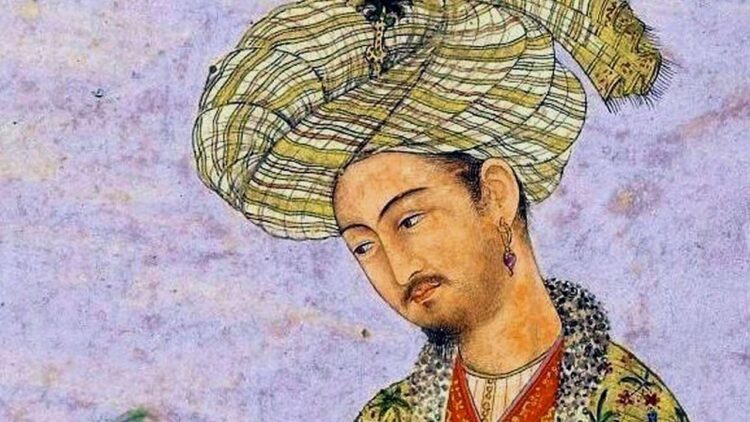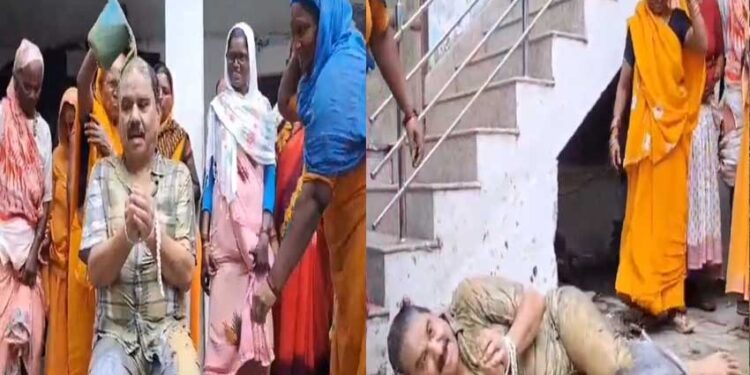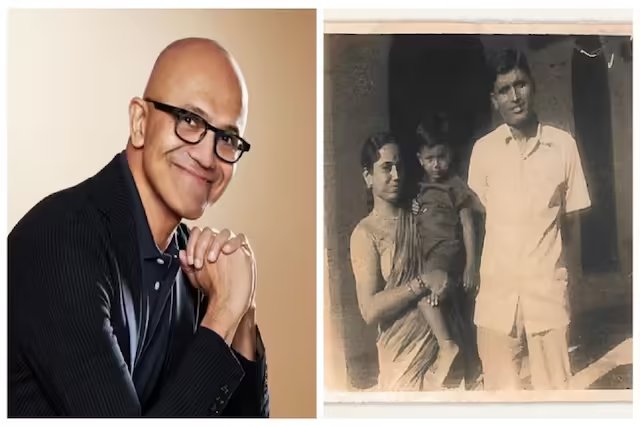History News Desk !!! Zahir Udd-Din Muhammad Babur (English: Babur, born 14 February, 1483 AD, Fargana; death- 26 December, 1530 AD, Agra), known as Babur in Indian history, was a Mughal ruler. He was the founder of the Mughal dynasty in India. Babar Taimur was a parpota of Lung and believed that Genghis Khan was the ancestor of his dynasty. In the first war of Panipat in 1526 AD, the Mughal dynasty was established in India with the defeat of Sultan (Lodi dynasty) of Delhi Sultanate (Lodi dynasty). The founder of this dynasty was Zahir Udd-Din Muhammad Babur. Babur’s father Omar Sheikh Mirza was the ruler of Fargana, after whose death Babur became the real officer of the state. Due to family difficulties, he could not rule his ancestral state of Central Asia. He established the kingdom in Afghanistan by authority over Kabul at the age of 22. He was the ruler of Kabul for 22 years. In that period, he tried several times to get back the kingdom of his ancestors, but could not succeed.
Birth and consecration
On 14 February, 1483 AD, ‘Zaheeruddin Muhammad Babur’ was born in Farganna. Babur was the fifth of Timur on behalf of his father and the fourteenth descendant of Genghis Khan (Mongol leader) from his mother. His family used to come under the ‘Chagatai dynasty’ of the Turkish caste. Babur became the ruler at the age of 11 after the death of his father ‘Omar Sheikh Mirza’. He got his coronation done in collaboration with his grandmother ‘Esan Daulat Begum’. Babur took over Samarkand in 1501 AD during his reign, which remained in his possession for only eight months. In 1504 AD, after Kabul victory, Babur abandoned the title ‘Mirza’ by his ancestors and wore a new title ‘Padshah’.
Babur’s India victory
Babur’s first campaign against India was against ‘Yusufzai’ caste in 1519 AD. In this campaign, Babur did ‘Bajaur’ and ‘Bhera’ under his control. This was Babur’s first Indian campaign in which he used artillery. In his second campaign of 1519 AD, Babur won ‘Bajaur’ and ‘Bhera’ again as well as ‘Syalkot’ and ‘Syedpur’. Daulat Khan, who was the governor of Lahore at that time due to differences between Abraham Lodi and Daulat Khan Lodi under the fourth campaign of 1524 AD Sent to invite to attack. Probably at this time Rana Sanga also sent Babur to Nimtrain to attack India.
Babur due to India invitation
There were probably some reasons behind Babur inviting India to invite India- Daulat Khan wanted to maintain his independent existence in Punjab. Alam Khan in any way wanted to take over the throne of Delhi. Rana Sanga probably wanted to get the throne of Delhi himself by destroying the power of the Afghans by Babur.
Humayun, Babur, Jahangir and Akbar
In his fourth campaign 1524 AD, Babur took control of Lahore and Deepalpur. In the fifth campaign conducted by Babur in November 1526, in which Babur’s son Humayun also came with a sarcastic contingent of Babur, he first compelled for dedication to Daulat Khan and was later taken captive. Soon Alam Khan also surrendered. In this way the entire Punjab came under the capture of Babur.
First War of Panipat (April 21, 1526 AD)
At this time Ibrahim Lodi was the Sultan of Delhi and Daulat Khan Lodi Governor of Punjab. Daulat Khan Lodi was angry with Abraham Lodi. He revolted with the Delhi Sultanate and called Babur from Qabul for his help. Babur himself wanted to attack India. He started preparing to attack India on the invitation of Daulat Khan Lodi. At that time, Turk-Afghan used to attack India to get rich with loot. Babur took a very large army and walked towards Punjab.
This war was an expression of Babur’s ambitious plans. This war was fought between Sultan Abraham Lodi (Afghan) and Babur of Delhi. On April 12, 1526 AD, the forces on both sides came face to face in the field of Panipat and the war began on 21 April. It is believed that the decision of this war has been decided by noon. Abraham Lodi was badly defeated and killed in the war. Babur has mentioned the use of only 12000 soldiers to win this war in his work ‘Babarnama’. But there is a lot of differences among historians on this subject. In this war, Babur used the famous ‘Tulgama War Policy’ for the first time. In this war, Babur used ‘Usmani Vidhi’ (Rumi method) to decorate the cannons. Babur had accepted the Tulgama war system with Uzbek. In the battle of Panipat, Babur took the services of his famous shooters ‘Ustad Ali’ and ‘Mustafa’.
Babur distributed the money looted in this war among his military officers, servants and relatives. Probably in this partition, Humayun received the Kohinoor diamond, which was taken away from the Gwalior King ‘Raja Vikramjit’. It is believed that the cost of half a day of the whole world could be completed by its value. On the occasion of India Vijay, Babur gave a silver coin as a gift to each resident of Kabul. Due to this generosity, he was given the title of ‘Kalandar’. After Panipat victory, Babur said, ‘Kabul’s poverty is no longer for us’. The war of Panipat has not decided the fate of India, but the fate of the Lodi dynasty must have decided. The power of the Afghans did not end, but it was weak. After the war, Babur took over not only on Delhi and Agra, but also all the parts of the Lodi Empire.
Battle of Khanwa (March 17, 1527 AD)
The Rajput King of Chittor was the most powerful ruler of Chittor after the Sultan of Delhi in northern India. He adopted a policy of neutrality in the war of two Muslims, Abraham Lodi and Babur. He used to think that Babur would go back after looting, then he would get the suggestion of the Hindu state in Delhi. When he saw that Babur was organizing the establishment of the Mughal kingdom, he agreed to fight with him. Rana Sanga was Veer and a skilled fighter. He had fought many, he always won. On the other hand, Babur also understood that it is not possible to establish the Mughal state in India while Rana Sanga; Therefore, he also decided to fight Rana with his army.
On March 17, 1527 AD, the battle of Khanwa was fought between Babur and Rana Sanga. Historians have many opinions about the reasons for this war. First, since the agreement signed in Babur and Rana Sanga before the war of Panipat, Sanga was to assist in Babur’s military operation against Ibrahim Lodi, which later retracted Rana Sanga. Second, Sanga did not consider Babur as the king of Delhi. Unlike these two reasons, some historians believe that this war was the result of the ambitious plans of Babur and Rana Sanga. Babur wanted to trample India and Rana Sanga wanted to establish a Hindu kingdom on the remains of the ruins of the Turk-Afghan state, as a result, the war began on 17 March 1527 AD between the two armies. In this war, Rana Sanga was supported by Marwar, Amber, Gwalior, Ajmer, Hasan Khan Mewati, Basin Chanderi and Ibrahim Lodi’s brother Mahmud Lodi.
In this war, the morale of Babur’s soldiers started falling due to the news of Rana Sanga’s joint front. Babur announced not to drink alcohol by announcing all the characters of alcohol by announcing the ban on drinking and selling his soldiers, announced not to take ‘tamar kar’ from Muslims. Tamga was a type of business tax, which was installed by the state. In this way, Babur decided a success strategy against Rana Sanga, using the strategy of Panipat war in the war of Khanwa.
Babur’s victory
The historical poetry of Rajasthan describes the war of Sanga and Babur in detail that Babur came to fight with Sanga with twenty thousand Mughal soldiers. He lured the Lodi commander of Sanga’s army, which he cheated Sanga and met Babur along with the army. The first encounter of Babur and Sanga took place in Bayana and second at a place called Khanwa. The Rajputs fought bravely. Finally Sanga lost and Babur’s victory. This victory was not the valor of Babur’s soldiers, but his modern artillery. While fighting with the Rajputs, the feet of the Turks were uprooted, causing the victory of the Rajputs and the defeat of the Turks, but when Babur’s artillery showered the fire, Sanga’s win turned into a defeat. Still Sanga and his heroes kept fighting till death. Babur has written about the Rajputs, – ‘They know how to die; But do not know how to fight. This decisive war between Sanga and Babur took place on 16 April, 1527 in a place called Khanwa near Fatehpur Sikri. In this way, Rana Sanga was also defeated after Jayachandra in the Brajmandal of that time.
Rana Sanga was injured in this war, but somehow rescued by his colleagues. Later, Rana Sanga died due to poison by some of his feudal. After winning the war of Khanwa, Babur assumed the title of ‘Ghazi’.
Babur’s stability in life
After the war of Khanwa, there was stability in Babur’s stroller and unstable life. On January 29, 1528 AD, Babur defeated the Subedar ‘Medini Rai’ in the ‘War of Chanderi’. After the Chanderi war, Babur built the tower of the cut ends of Rajputana and gave the slogan of Jihad. Two daughters of Medini Rai were married to ‘Kamran’ and ‘Humayun’. On May 6, 1529 AD, Babur defeated the joint army of Bengal and Bihar in the ‘Battle of Ghaghra’. The Ghaghra war was fought on water and land. As a result, Babur’s empire reached Ghaghra from Oxus and Gwalior from Himalayas. After the Ghaghra War, Babur made a treaty with Nusrat Shah, the ruler of Bengal, accepted the sovereignty of his empire. Nusrat Shah assured Babur that he would not give shelter to Babur’s enemies in his empire.
Establishment of Mughal State
After the defeat of Abraham Lodi and Rana Sanga, Babur established the Mughal kingdom in India and made Agra its capital. Before that the capital of the Sultans was Delhi; But Babur did not make him the capital, because there were Pathans, who did not like the rule of the Turks. With both administration and defense attitude, Babur found Agra in Delhi. Due to the Mughal state capital Agra, there was a close relationship with Braj from the beginning. The biggest post of rulers in Central Asia was ‘Khan’, which was given to the Mongol dynasties. The other big ruler was called ‘Amir’. Babur’s ancestor Taimur was also called ‘Amir’. The Muslim ruler of Delhi in India was called ‘Sultan’. Babur declared his post ‘Emperor’. After Babur, all the Mughal emperors were called ‘Badshah’.
Death
Babur could rule India for only 4 years. Babur died in Agra on 26 December 1530 AD at the age of 48. Initially his body was kept in ‘Aram Bagh’ in Agra, but finally his body was taken to Kabul as per Babur’s last wish, where his tomb is made. Later, his elder son Humayun became the Mughal emperor.
Babur’s achievements
Probably Babur was the first ruler after Kushans, who kept Kabul and Kandahar under his complete control. He established the Afghan and Rajput power in India and established the ‘Mughal Empire’, which survived for about twenty -two hundred years. Babur attacked India and introduced a new war policy. Babur inaugurated the use of ‘Gaz-e-Babri’ for measurement of roads.
Scholar
Apart from being a worthy ruler, Babur was also a scholar of Turkish language. He composed his autobiography ‘Babarnama’ in Turkish language, which was later translated into Persian language by Abdul Rahim Khankhana. Leiden and Arskin translated ‘Babarnama’ into English in 1826 AD. Bearridge took out a revised English version of it. In addition, Babur is also considered the originator of the verse style called ‘Mubaiyan’. Apart from this, Babur also invented a script called ‘Khat-e-Babri’. Babur has mentioned only five Muslim rulers- Bengal, Delhi, Malwa, Gujarat and Bahmani states and two Hindu rulers Mewar and Vijayanagar in their autobiography ‘Babarnama’.
Vives of major historians
Smith described Babur as the most talented among the Asian rulers of his era and high positions in the emperors of any country and time. Rushbruk has praised Babur as a person and ruler. Elliott said that, if Babur was raised and trained in England due to ‘happy mind’, heroic, great, thoughtful and fair personality, it would have been ‘Henry IV’.






